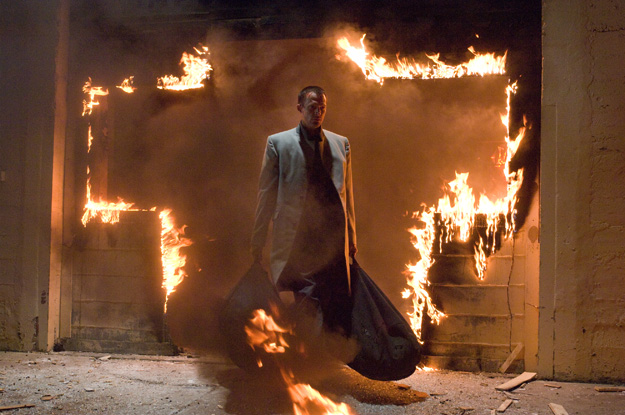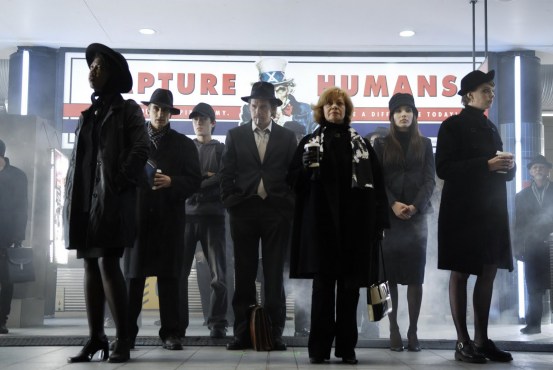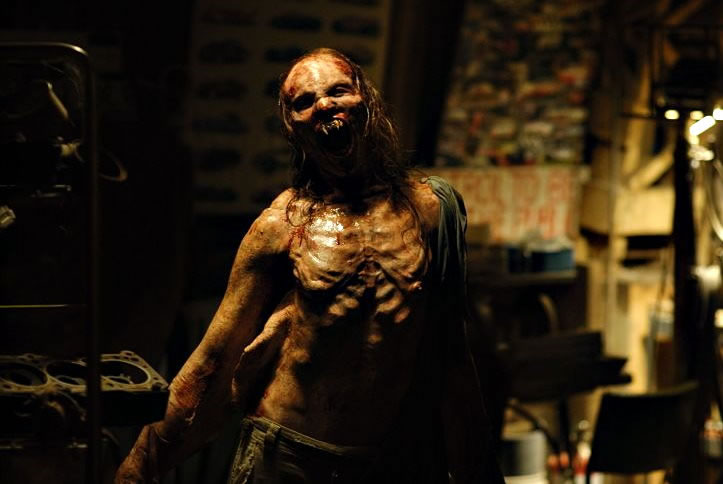 Several people commented during our Avatar contest that they would like to see us review The Mummy (1999). I happen to have a unique perspective on this movie, as it has somehow wormed its way into an odd place in my life. I first saw it in college, and while I didn’t hate it, I felt no interest in sitting through it ever again. Steven Sommers’ obsession with mindless spectacle and pointless deaths was enough to ruffle even my then-adolescent feathers. I put The Mummy from my mind, and didn’t even bother to check out the over-hyped sequel in the summer of 2001.
Several people commented during our Avatar contest that they would like to see us review The Mummy (1999). I happen to have a unique perspective on this movie, as it has somehow wormed its way into an odd place in my life. I first saw it in college, and while I didn’t hate it, I felt no interest in sitting through it ever again. Steven Sommers’ obsession with mindless spectacle and pointless deaths was enough to ruffle even my then-adolescent feathers. I put The Mummy from my mind, and didn’t even bother to check out the over-hyped sequel in the summer of 2001.
Seven years later, I got married, and I learned that The Mummy was one of my wife’s all-time favorite movies. Since it had been so long, and out of affection for her, I gladly endured one more screening. The problem is, one was not enough for her. For the last two years of my life, every time there’s laundry to fold or iron, The Mummy goes in the VCR. I usually try to busy myself in some other room, balancing the checkbook or something, whenever she watches The Mummy. Despite this, I can still hear it, and have learned all the screams of the movie by heart.
So, what’s in The Mummy? We start around 1200 B.C. when Imhotep (Arnold Vosloo), high priest of Pharaoh Sethi I, and Ank Su Namun, the Paraoh’s concubine (Patricia Velasquez, above) conspire to murder Sethi. They take turns hacking him with swords, causing him to go “Aaaggh!†“Eeee!â€Â “Aaaaa!†Ank Su Namun then kills herself to avoid punishment for the murder. Imhotep later tries to resurrect her, but Sethi’s guards stop him. He is sentenced to be mummified alive for his crimes. (Just for the record, that’s not nearly as bad as it sounds. In real life, you’d be dead halfway through step one.) Some priests cut off his tongue, resulting in a scream that is really more of gasp. Imhotep is then buried alive, and placed under a curse that says, should he be resurrected, he would return as a pestilence to destroy the earth.
Before Scott Evil can jump up and say “Why don’t you just kill him and be done with it?†we are transported to the 1920s. We meet Evelyn Carnahan (Rachel Weisz), a British librarian and Egyptologist, who emits an “Eeeek!†when her brother, Jonathon (John Hannah), makes a mummy pop out of a sarcophagus, startling her. Jonathon has found an artifact that intrigues Evie, and she begins assembling a team to travel deep into Egypt to find the lost city of Hamunaptra. They are joined by Rick O’Connell (Brendan Fraser), an adventurer from the States, and four treasure hunters, along with many other nameless pieces of monster fodder, destined to emit screams.
On the journey, their ship is attacked by fighters who protect Imhotep’s tomb called the Medjai. O’Connell sets one on fire, who jumps off the boat, screaming “Hoo, hoo, hoo-aaaaah!†(splash) Once they arrive at Hamunaptra, three Arabic-speaking guides are melted by acid in a booby trap,
Aaagh!
Aaagh!
Owwie!
A warden has a golden beetle come to life, burrow into his foot, then up his body and into his brain, causing him to go mad and run screaming down a corridor into a wall
Ah! Ah! Ah! Ah! Ah! Smack
And finally, Evie reads from the Book of the Dead, bringing Imhotep back to life. “Noo! You must not read from the book!†As soon as she does, a storm of locust comes up, forcing the adventurers inside the ancient temple that is now stalked by Imhotep. One by one, all the extras are killed either by Imhotep, the beetles, or booby traps, resulting in screams to numerous to transcribe.
They return to Cairo but the Mummy follows them. Four treasure hunters are under a special curse for opening Imhotep’s organ chest, and he kills each of them before moving on to the rest of the world. While the first one dies screaming “No! Please, please, please …†the rest of them go out with more of an “Aaaeeeiiieck*†as Imhotep drains them of their life. Each time he does so, he partially regenerates, until he looks like a living man. Which raises some questions: what would he have done if fewer than four had opened the chest? If no one had opened the chest, but Evie had read from the book, would he have just destroyed the world as a walking corpse? For that matter, since he plans on destroying the world anyway, why bother with these guys?
The answer is, you have to think like Steven Sommers. For Sommers, making sense is nothing; spectacle is everything. Nothing goes into the “plot†of this movie unless it will lead to either a fight scene or a horrific, screaming death (although the deaths involve an implausible omission of red liquid to keep that all-important PG-13 rating). The curse on Imhotep’s organ chest is nothing more than an aside, crammed into the movie to give Sommers an excuse to kill four more guys.
Frankly, the rest of the movie is pretty much the same thing. More screams, people dying by the hundred, and inane scripture quotations with no meaning. Beth eventually showed me the sequel, and I actually liked it a little better, though I think it was mostly because I had lower expectations. If you’re interested in Sommer’s work, or in Universal Studios monsters, your time would be better spent checking out Van Helsing (2004). It has all the same stupidities as The Mummy, but at least has cooler characters, awesome action scenes, and some really wicked gadgets.
To summarize my impression of The Mummy:
Sitting through it once: “Eh.†(In other words, [Rating:1.5/5])
Being subjected to it over and over:
“Aaaggh!†“Eeee!â€Â “Aaaaa!â€
“Hoo, hoo, hoo-aaaaah!†(splash)
Aaagh!
Aaagh!
Owwie!
Ah! Ah! Ah! Ah! Ah! Smack
“No! Please, please, please …â€
“Aaaeeeiiieck*â€


































